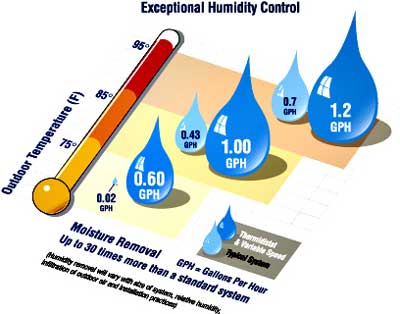- Humidity is the measure of how much water vapour is in the air and is measured using a hygrometer.
- When humidity is low (therefore little water vapour in the air), moisture on our skin evaporates easily making us feel comfortable.
- When humidity is high (therefore a large amount of water vapour in the air), moisture on the skin CANNOT evaporate easily (because there is already so much moisture in the air) and this makes us feel “sticky” and uncomfortable. This is when we say it’s a “humid” day.
RELATIVE HUMIDITY
- Relative humidity tells us how much water vapour is in the air compared to how much the air can actually hold.

- If the relative humidity is 60%, this means that the air could hold 40% more water.
- Warm air can hold much more moisture than cold air.
DEW POINT
- The dew point is the temperature at which water vapour begins to condense (form a liquid).
- You can usually see dew on grass or spider webs once the temperatures become cooler at night.
- You can also see dew form on a pop can on a warm day. This occurs because the surrounding air has come into contact with a surface that has a temperature at or below the dew point. Therefore, condensation occurs.
EFFECTS OF HUMIDITY
- Why does sweating cool you down?
- When the sweat evaporates from your body, it carries excess heat away from the body therefore cooling you down.
- If humidity is high, the sweat is unable to evaporate from the body.
- In the winter, humidity is very low and this makes the air feel very dry. The reason for this is that water evaporates very quickly leaving the environment dry.
- To make up for this dryness, some people run devices called humidifiers. Humidifiers introduce water vapour into a room to make it more humid (less dry).
